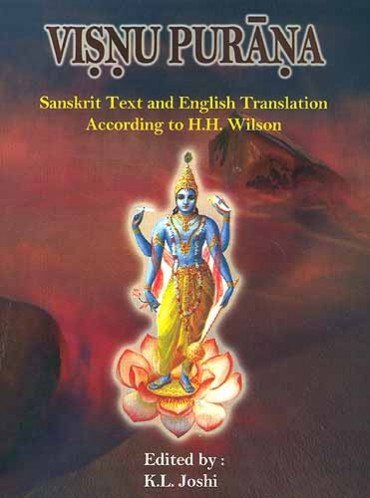The Vishnu Purana
by Horace Hayman Wilson | 1840 | 287,946 words | ISBN-10: 8171102127
The English translation of the Vishnu Purana. This is a primary sacred text of the Vaishnava branch of Hinduism. It is one of the eighteen greater Puranas, a branch of sacred Vedic literature which was first committed to writing during the first millennium of the common era. Like most of the other Puranas, this is a complete narrative from the cr...
6. The Naradīya Purāṇa
6. Nārada or Naradīya Purāṇa. “Where Nārada has described the duties which were observed in the Vrihat Kalpa, that, is called the Nāradīya, having twenty-five thousand stanzas[1].” If the number of verses be here correctly stated, the Purāṇa has not fallen into my hands. The copy I have analysed contains not many more than three thousand ślokas. There is another work, which might be expected to be of greater extent, the Vrihat Nāradīya, or great Nārada Purāṇa; but this, according to the coñcurrence of three copies in my possession, and of five others in the Company's library, contains but about three thousand five hundred verses. It may be doubted, therefore, if the Nārada Purāṇa of the Matsya exists[2].
According to the Matsya, the Nārada Purāṇa is related by Nārada, and gives an account of the Vrihat Kalpa. The Nāradīya Purāṇa is communicated by Nārada to the Ṛṣis at Naimiṣāraṇya, on the Gomati river. The Vrihannāradīya is related to the same persons, at the same place, by Sūta, as it was told by Nārada to Sanatkumāra. Possibly the term Vrihat may have been suggested by the specification which is given in the Matsya; but there is no description in it of any particular Kalpa, or day of Brahmā.
From a cursory examination of these Purāṇas, it is very evident that they have no conformity to the definition of a Purāṇa, and that both are sectarial and modern compilations, intended to support the doctrine of Bhakti, or faith in Viṣṇu. With this view they have collected a variety of prayers addressed to one or other form of that divinity; a number of observances and holidays connected with his adoration; and different legends, some perhaps of an early, others of a more recent date, illustrative of the efficacy of devotion to Hari. Thus in the Nārada we have the stories of Dhruva and Prahlāda; the latter told in the words of the Viṣṇu: whilst the second portion of it is occupied with a legend of Mohinī, the will-born daughter of a king called Rukmāṅgada: beguiled by whom, the king offers to perform for her whatever she may desire. She calls upon him either to violate the rule of fasting on the eleventh day of the fortnight, a day sacred to Viṣṇu, or to put his son to death; and he kills his son, as the lesser sin of the two. This shews the spirit of the work. Its date may also be inferred from its tenor, as such monstrous extravagancies in praise of Bhakti are certainly of modern origin. One limit it furnishes itself, for it refers to Śuka and Parīkṣit, the interlocutors of the Bhāgavata, and it is consequently subsequent to the date of that Purāṇa: it is probably considerably later, for it affords evidence that it was written after India was in the hands of the Mohammedans. In the concluding passage it is said, “Let not this Purāṇa be repeated in the presence of the ‘killers of cows’ and contemners of the gods.” It is possibly a compilation of the sixteenth or seventeenth century.
The Vrihannāradīya is a work of the same tenor and time. It contains little else than panegyrical prayers addressed to Viṣṇu, and injunctions to observe various rites, and keep holy certain seasons, in honour of him. The earlier legends introduced are the birth of Mārkaṇḍeya, the destruction of Sagara's sons, and the dwarf Avatāra; but they are subservient to the design of the whole, and are rendered occasions for praising Nārāyaṇa: others, illustrating the efficacy of certain Vaiṣṇava observances, are puerile inventions, wholly foreign to the more ancient system of Paurāṇik fiction. There is no attempt at cosmogony, or patriarchal or regal genealogy. It is possible that these topics may be treated of in the missing stanzas; but it seems more likely that the Nārada Purāṇa of the lists has little in common with the works to which its name is applied in Bengal and Hindustan.
Footnotes and references:
[1]:

Click to view
[2]:
The description of Viṣṇu, translated by Col. Vans Kennedy (Affinity of Ancient and Hindu Mythology, p. 200) from the Nāradīya Purāṇa, occurs in my copy of the Vrihat Nāradīya. There is no Nārada Purāṇa in the East India Company's library, though, as noticed in the text, several of the Vrihat Nāradīya. There is a copy of the Rukmāṅgada Charitra, said to be a part of the Śri Nārada Purāṇa.
